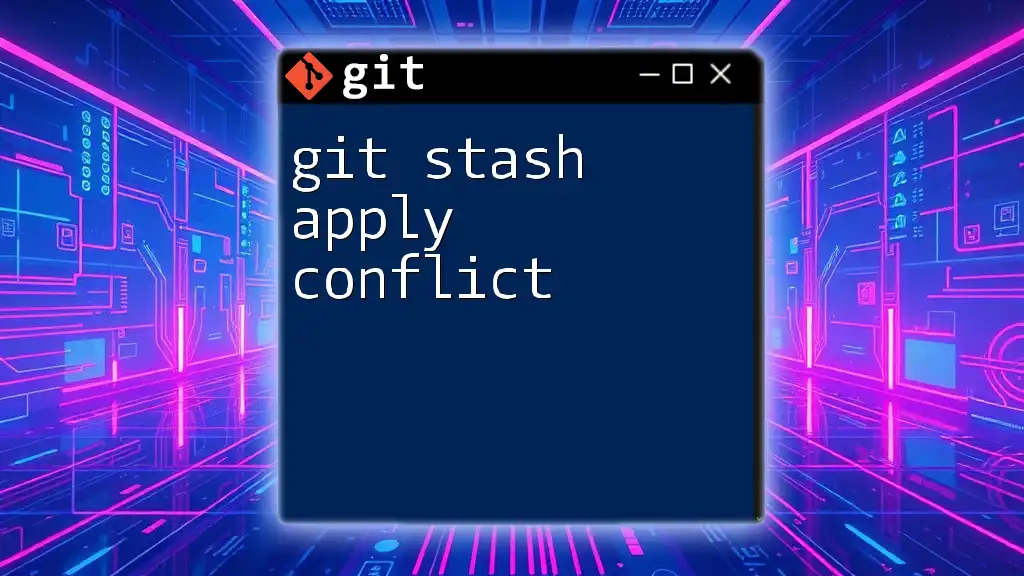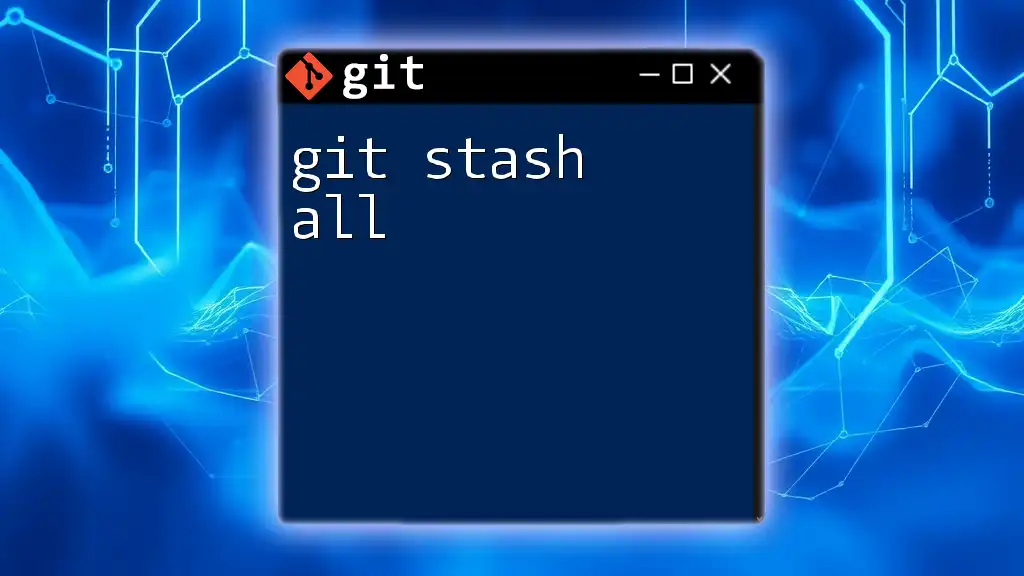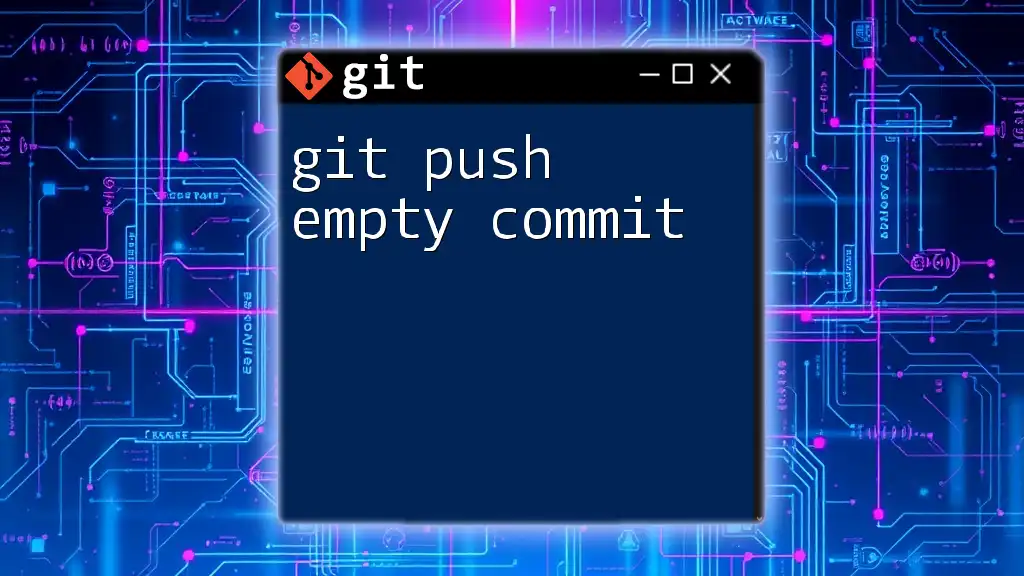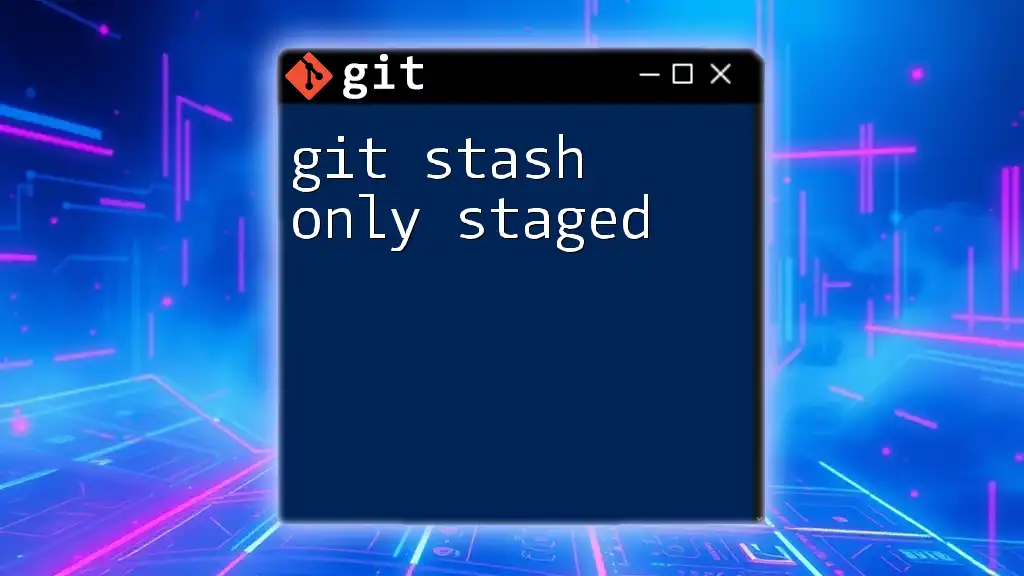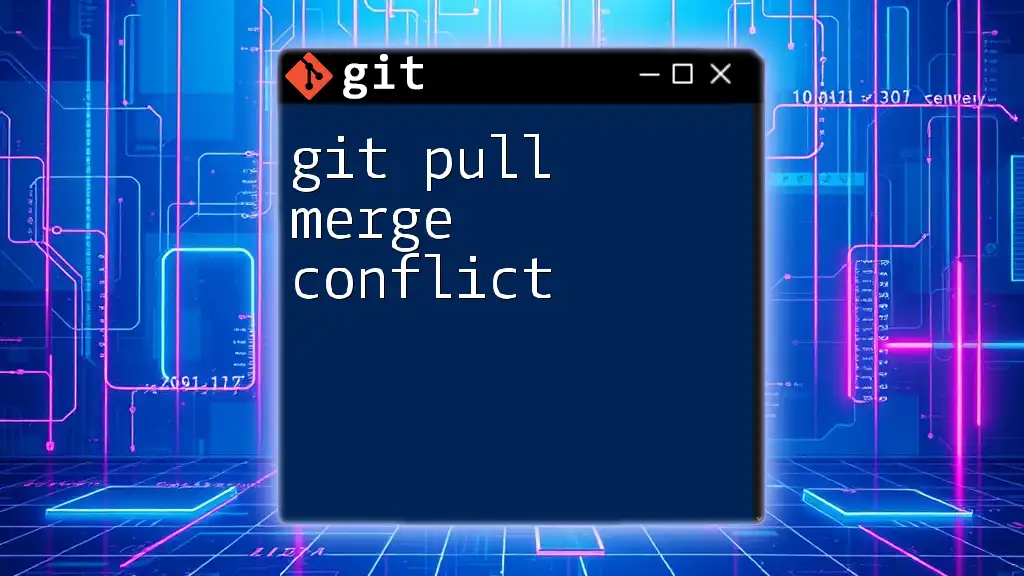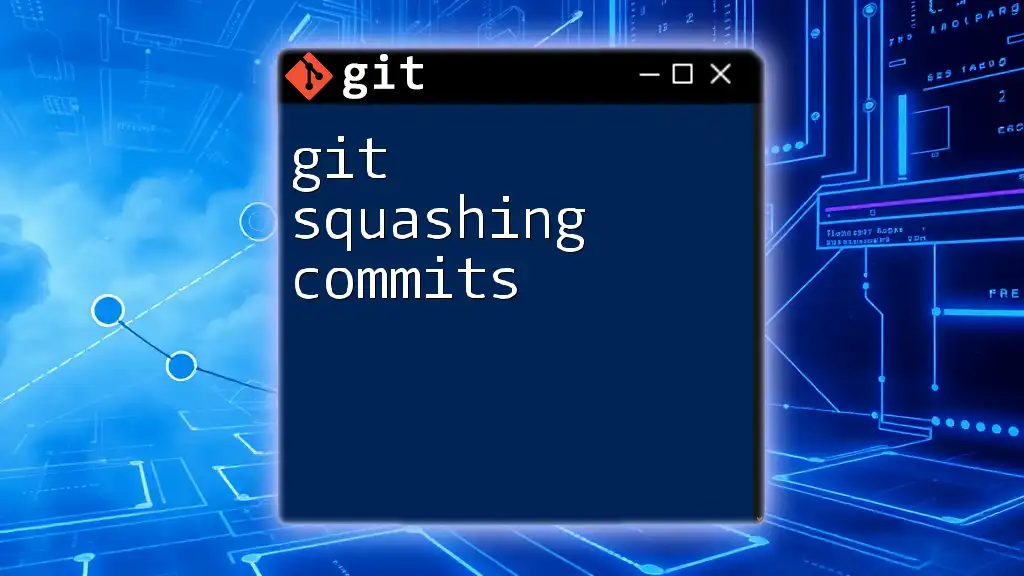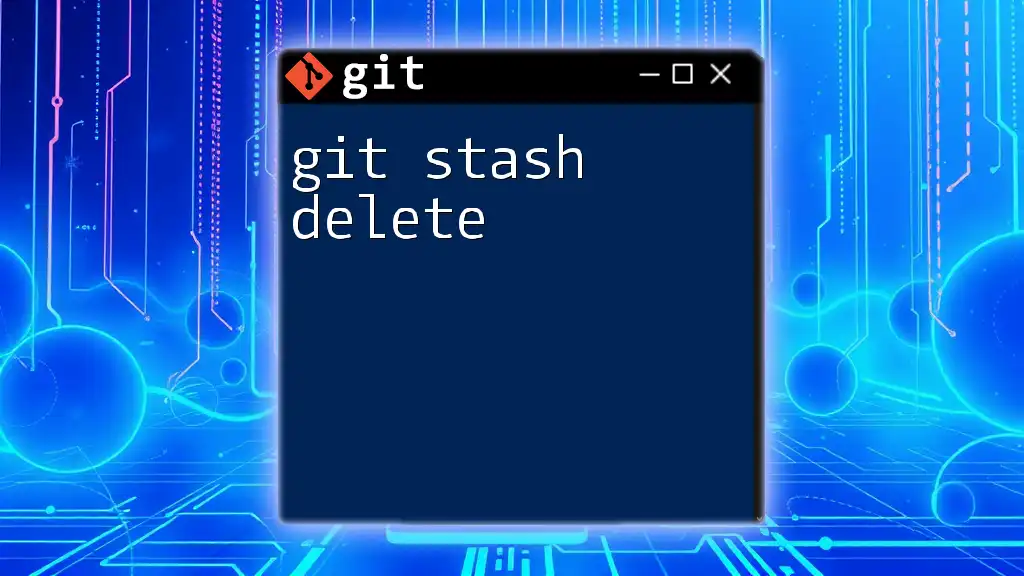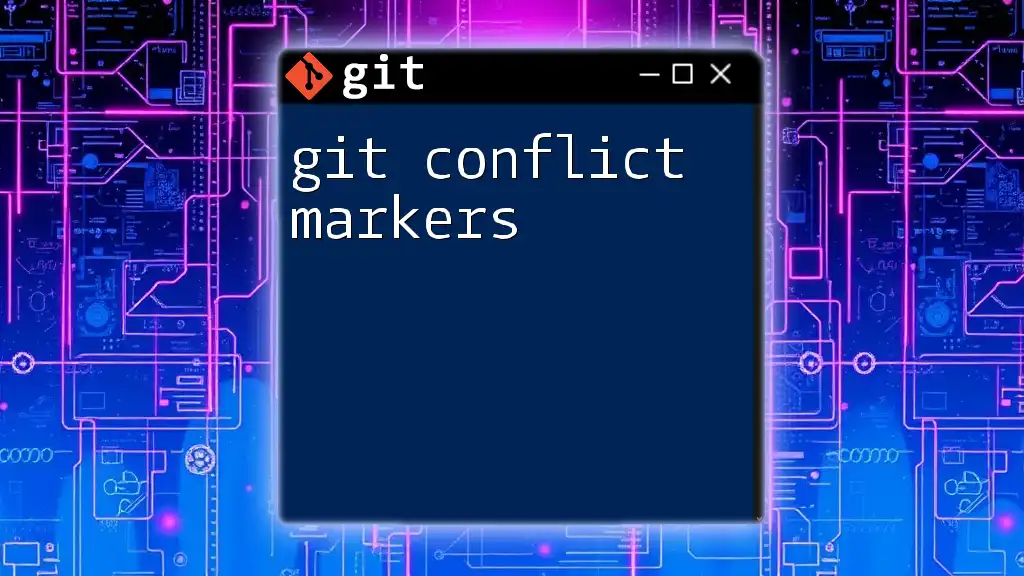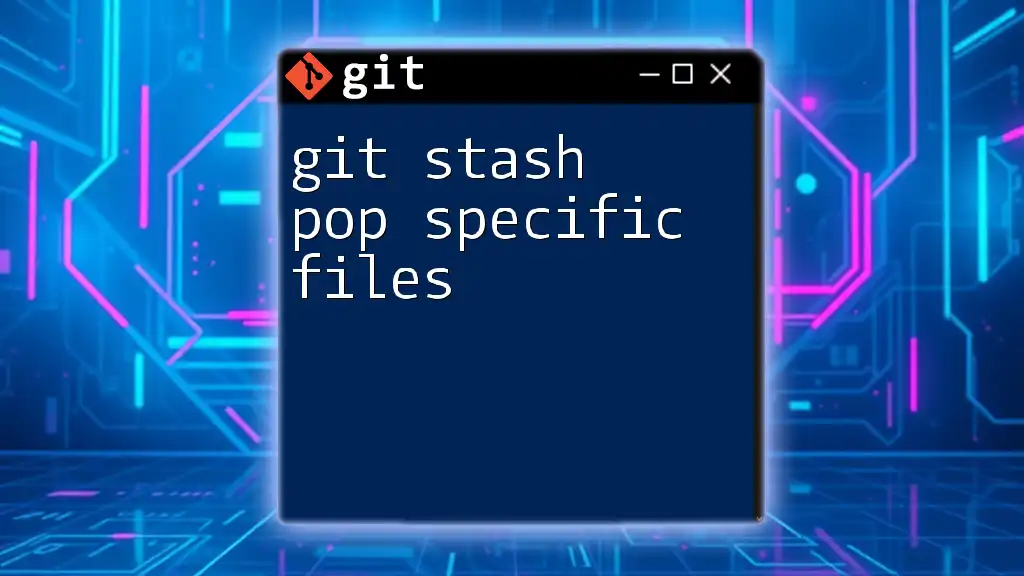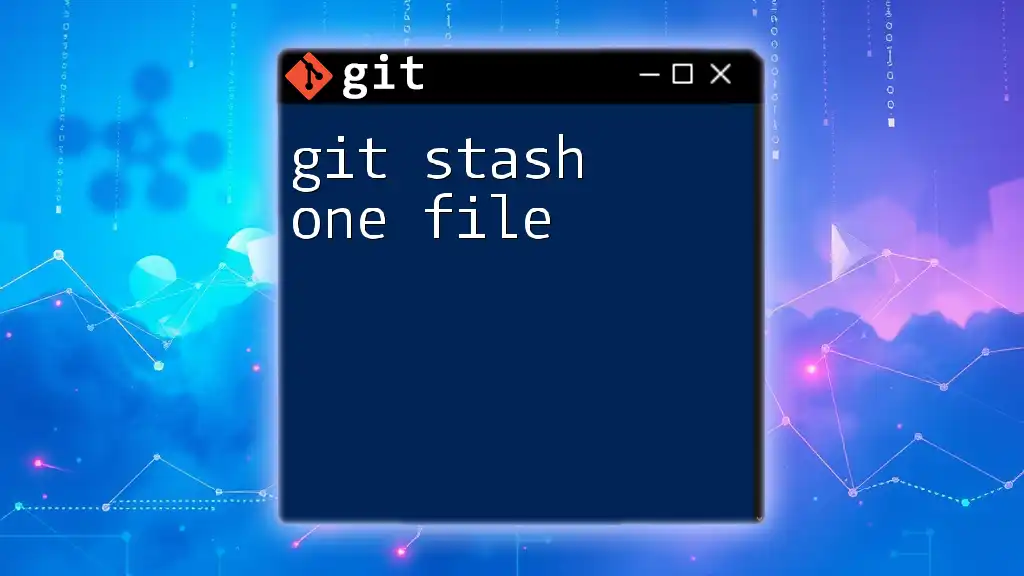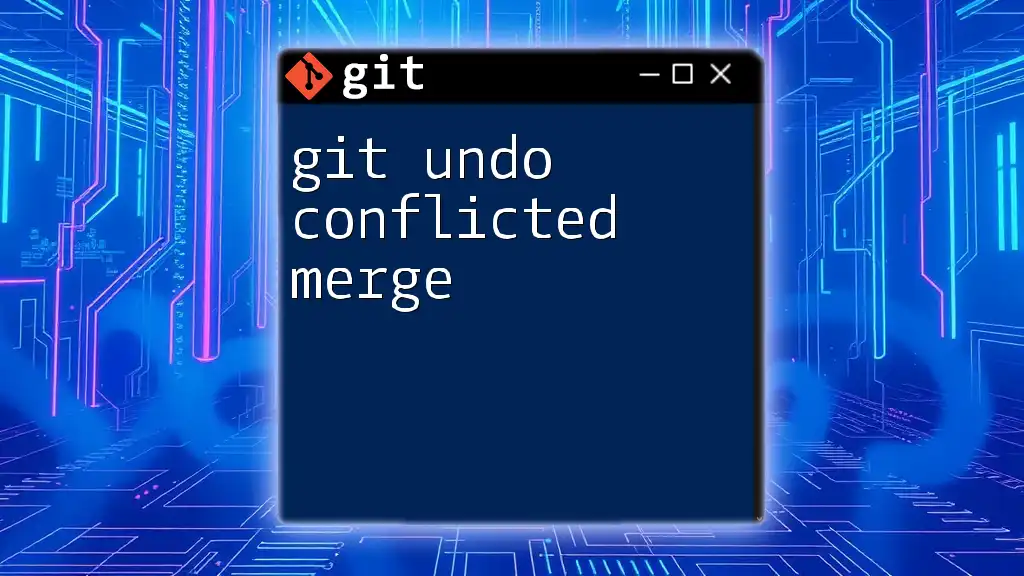When you apply a stash in Git and encounter conflicts, it occurs because the changes you're trying to apply from the stash clash with the modifications in your current working directory, requiring you to resolve these conflicts manually before you can complete the stash application.
Here's how to apply a stash and handle potential conflicts:
git stash apply
# If you encounter conflicts, resolve them in your files, then mark them as resolved
git add <file_with_conflicts>
# Finally, complete the stash application
git stash drop
What is Git Stash?
Git stash is a powerful command that allows developers to temporarily shelve (or “stash”) changes made in the working directory without committing them to the repository. This is particularly useful when you're working on something but need to switch branches or pull changes from a remote repository without losing your current progress.
Importance of Resolving Merge Conflicts
When you apply a stash using `git stash apply`, conflicts can occur if the changes in your stash contradict changes that have since been made in the branch where you are applying the stash. Resolving these conflicts is crucial because unresolved conflicts can lead to data loss or inconsistencies in your codebase.
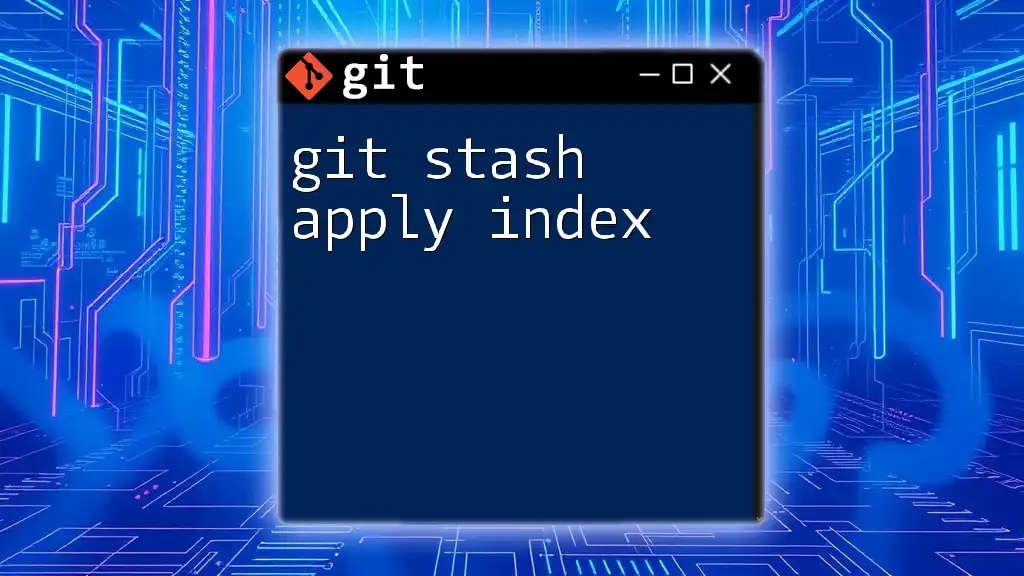
Understanding Git Stash
What Does Stashing Do?
When you use the `git stash` command, Git saves your uncommitted changes—both staged and unstaged—into a stack-like structure. This allows you to revert to the last commit while preserving your modifications.
How Stashing Works Internally
Internally, stashed changes are stored in the `.git` directory. Each stash entry consists of the staged changes and the untracked changes, giving you the option to pop them back later.
Common Commands Related to Stashing
Here's a brief overview of key stash commands:
-
Stashing Changes: To stash changes, you can use either:
git stash save "description of the stash"or simply:
git stash push -
Listing Stashes:
git stash list -
Viewing Stashed Changes:
git stash show
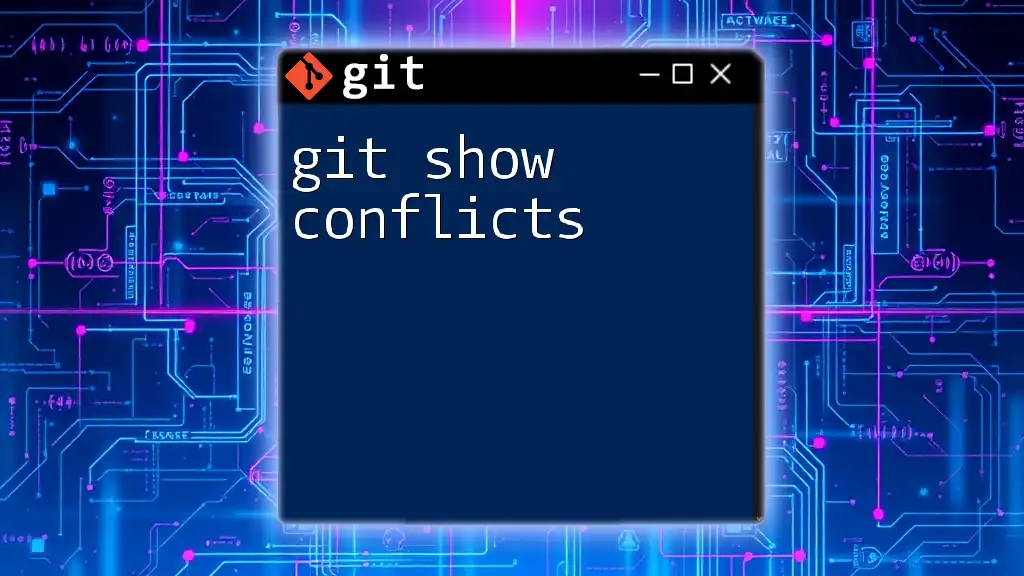
Applying Stashed Changes
Using `git stash apply`
To apply a stash, you use:
git stash apply [<stash>]
If you omit `<stash>`, Git will apply the most recent stash. This command attempts to merge the stashed changes into your current working directory.
Situations Leading to Conflicts
Conflicts during the stash apply may arise when the working directory has been modified after the stash was created. If two sets of changes—your stashed changes and existing changes—affect the same lines in a file, Git flags this as a conflict that you need to manually resolve.
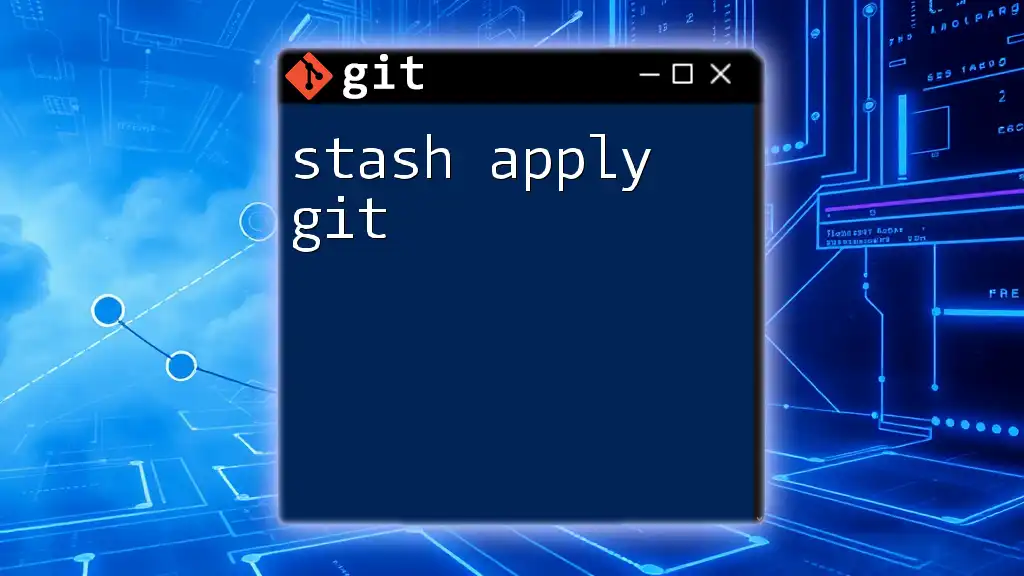
Handling Merge Conflicts After Stash Apply
Identifying Conflict Markers
When you encounter a conflict, Git marks the affected files with conflict markers:
<<<<<<< HEAD
Your changes here
=======
Stashed changes here
>>>>>>> stash@{0}
Understanding these markers is essential for resolving conflicts effectively.
Steps to Resolve Merge Conflicts
To resolve conflicts manually, follow these steps:
- Open the conflicted file in your preferred text editor.
- Look for sections marked by conflict markers.
- Determine which changes to keep. You can choose either your current changes, the stashed changes, or a combination of both.
- Remove the conflict markers after making your edits.
- Save the file.
For example, if your file looks like this:
<<<<<<< HEAD
int count = 5;
=======
int count = 10;
>>>>>>> stash@{0}
You might decide to edit it to:
int count = 10; // Updated based on stashed version
Using Git Tools for Conflict Resolution
Graphical Tools
Using graphical tools can simplify the process of resolving merge conflicts. Programs like GitKraken or Sourcetree provide visual diff tools that help you compare changes side by side and resolve conflicts more intuitively.
Command Line Tools
If you prefer the command line, you can utilize tools like meld or kdiff3 to assist in merging:
meld file_with_conflict
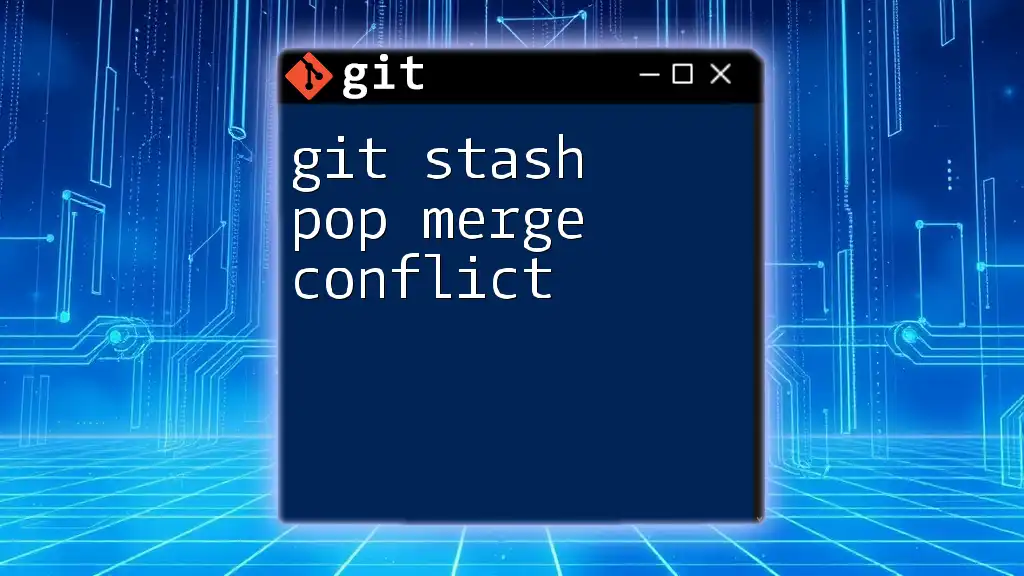
Best Practices for Avoiding Conflicts
Stashing Wisely
To minimize the chances of encountering a conflict, make sure to stash changes only when necessary. Avoid stashing often, as it can lead to confusion about the changes you have made.
Frequent Merging and Pulling
To keep branches aligned and reduce the potential for conflicts, pull from the repository frequently. Merging changes regularly ensures that your working directory stays updated with the latest revisions from your team.
Clear Communication Within Teams
Effective communication with your team can also help prevent conflicts. When multiple developers work on related files, it's essential to inform each other of changes to avoid overlap.
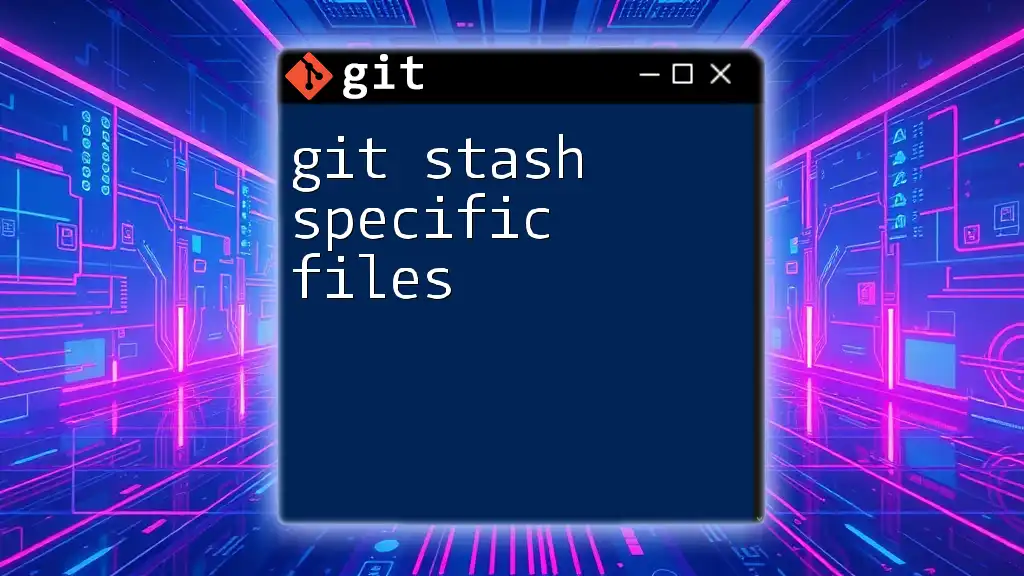
Real-world Examples
Scenario 1: Resolving a Simple Conflict
Imagine you create a new feature in a branch, stash those changes, and later apply them to the main branch where a similar feature has been developed. If your stashed changes conflict with the existing changes, follow the manual resolution steps above, modify the conflicting lines, and save your work.
Scenario 2: Complex Conflict Resolution
Sometimes, you may face conflicts spanning multiple files. In such cases, utilize graphical tools for an easier resolution process, or if you prefer the command line:
- Identify all conflicted files using:
git status - Open each file, make necessary adjustments, and save.
- Once all conflicts are resolved, stage the changes:
git add <file> - Finally, commit the resolved changes:
git commit -m "Resolved stash apply conflicts"
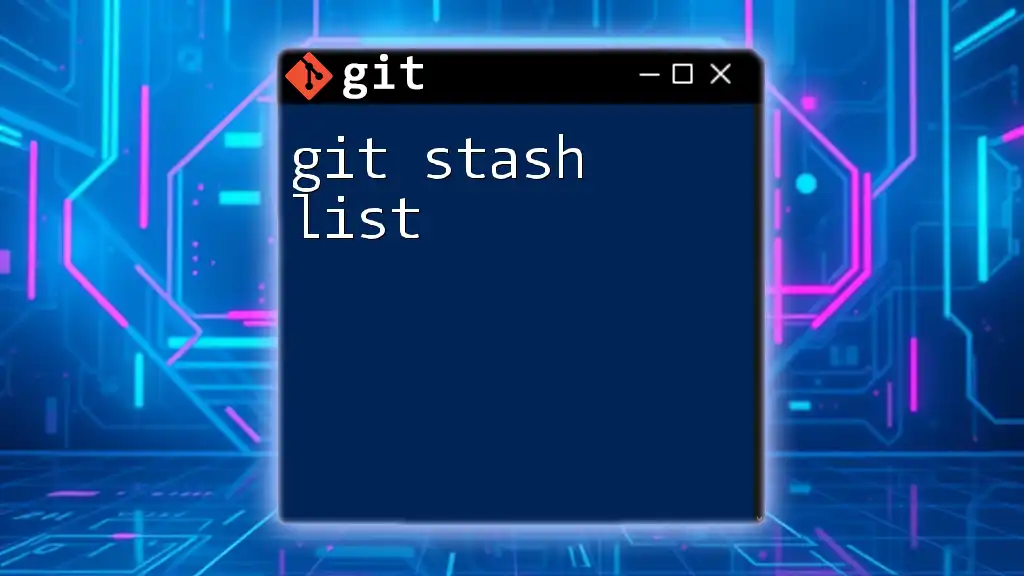
Conclusion
In summary, understanding how to handle git stash apply conflict is essential for maintaining a clean and effective workflow in version control. Keep in mind the best practices to reduce conflicts and communicate effectively with your team. Regular practice and familiarity with commands will enhance your efficiency and confidence in using Git.
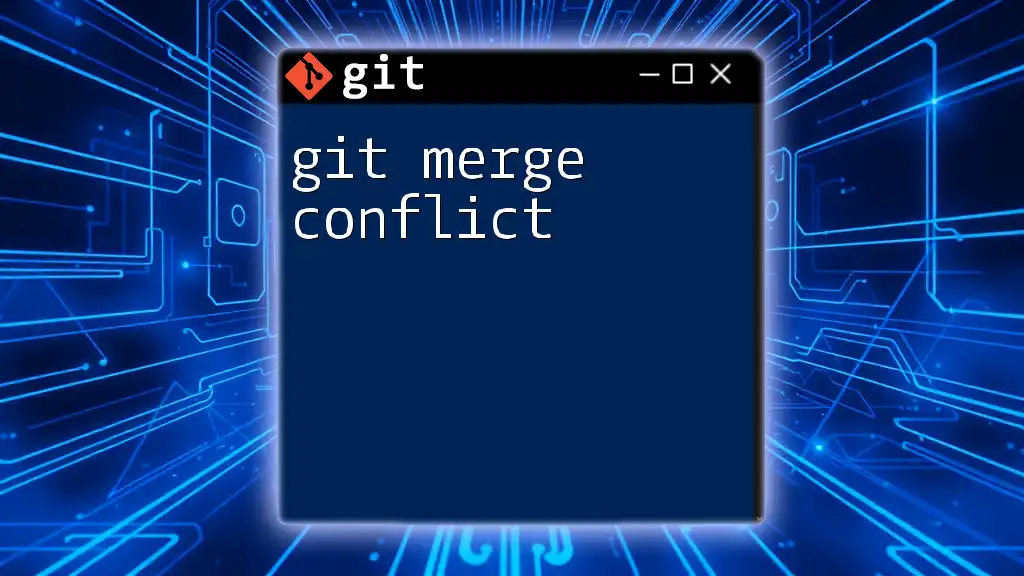
Additional Resources
Recommended Reading
For further learning, consider checking out the [official Git documentation](https://git-scm.com/doc) for detailed insights into stash commands and conflict resolution techniques.
Community Support
Don’t hesitate to engage in discussions in forums like Stack Overflow or GitHub, where you can seek help or share your experiences with resolving `git stash apply conflicts`.

